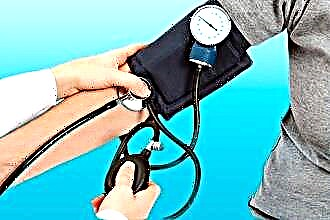 Is it possible to independently diagnose acute laryngeal stenosis in children?
Is it possible to independently diagnose acute laryngeal stenosis in children?
Stenosing lesions of the ENT organs are more often observed in babies under 3 years old due to the structural features of the larynx and mucous membranes. The pharynx of a small child has the shape of a narrowing funnel, so the slightest swelling of the mucous membranes leads to a decrease in the lumen of the larynx and, as a result, the development of respiratory failure. In addition, in the area of the vocal cords, the ciliated epithelium is very thin, so even an obsessive cough can lead to its damage and swelling.
Laryngeal stenosis forms
Abnormal narrowing of the larynx often occurs as a complication of respiratory diseases. Therefore, even vigilant parents cannot always diagnose stenosis in time and prevent asthma attacks. The clinical manifestations of the disease largely depend on the localization and prevalence of the stenosing phenomenon. In this regard, several forms of stenosis are distinguished:
- front - damage to the anterior wall of the larynx; posterior - damage to the posterior wall of the larynx;
- extended - stenosing lesion extends not only to the larynx, but the trachea;
- glottis - swelling of the tissues located between the vocal cords;
- subglottic space - an increase in the volume of the mucous membrane located between the trachea and the glottis;
- circular - simultaneous stenosing lesion of the anterior and posterior walls of the larynx.
The greatest danger to a child's life is a disease in the acute stage of development. Asthma attacks occur suddenly or against the background of laryngospasms, which are exacerbated mainly at night.
With an untimely call to a doctor and the provision of emergency care, acute asphyxia and death can occur.
General clinical picture
The first symptoms of stenosing lesions of the ENT organs are difficult to recognize. The development of pathology in 96% of cases is preceded by influenza, tonsillitis, pharyngitis, tracheitis, laryngitis, etc. Parents should be alerted by a spastic cough, which usually worsens at night.
Against the background of an infectious inflammation of the airways, children may have a fever, runny nose and symptoms of intoxication - headaches, lethargy, muscle weakness and nausea. Gradually, the clinical picture is supplemented by the following symptoms:
- hoarseness of the voice;
- noisy breathing (stridor);
- spastic cough;
- labored breathing;
- blanching of the skin;
- an attack of panic;
- cyanosis of the lips and oral mucosa;
- decrease in body temperature.
Laryngeal stenosis in a child leads to respiratory failure and irreversible processes. During an attack, the patient's condition only worsens, therefore, at the first symptoms of laryngospasm, you need to call a doctor at home. Before the arrival of the ambulance team, parents must provide emergency care to the child.
Laryngeal stenosis grade 1
Depending on the severity of the pathology, there are 4 stages of laryngeal stenosis. With the compensated stage of stenosis, the lumen of the airways narrows by a maximum of 50%, therefore, pathological symptoms appear only during physical exertion. The main manifestations of laryngeal stenosis at stage 1 of development include:
- moderate rapidity of breathing;
- slight blanching of the skin;
- shallow breathing;
- slow heartbeat;
- shortness of breath during exercise and walking.
With compensated stenosis, symptoms of respiratory failure do not appear at rest.
During an attack, the patient needs to be reassured, since panic only exacerbates the feeling of a lack of oxygen. To alleviate the condition of the child, it is recommended to carry out distraction therapy, which is aimed at improving blood circulation and restoring normal gas exchange in tissues. Stenosis of the larynx in children of the 1st degree can be treated with inhalations with saline, "Hydrocortisone" and "Pulmicroth".
To reduce the swelling of the mucous membranes, it is recommended to use antiallergic drugs of the third generation. The most effective antihistamines include Desal, Telfast, Ksizal. Laryngospasm can be stopped when the air is humidified up to 60%. To do this, you can use special humidifiers or hang wet towels and sheets in the room.
Laryngeal stenosis grade 2
At the stage of subcompensation (incomplete compensation), the patient's condition is assessed as moderate. On the eve of an attack, the child becomes restless, complains of a sore throat and shortness of breath. Over time, the skin begins to fade due to the narrowing of the larynx and a lack of oxygen in the body. Typical manifestations of grade 2 stenosis include:
 stridor;
stridor;- cyanosis of the mucous membranes and lips;
- shortness of breath at rest;
- shortness of breath;
- mental overexcitement;
- increased blood pressure;
- involvement of the intercostal muscles in the breathing process.
It is possible to reduce the child's inspiratory efforts during breathing with the help of sedative drugs - "Droperidol" or "Sodium oxybutyrate". To relieve broncho-obstructive syndrome, bronchodilators and expectorants are used.
After the arrival of doctors, the tracheobronchial tree is sanitized, as a result of which normal airway patency is restored.
With grade 2 stenosis, the inner diameter of the trachea can narrow by up to 70%. It is possible to quickly reduce tissue edema in the case of intramuscular administration of glucocorticosteroid drugs. As a rule, for this purpose, "Prednisolone" is used in a children's dosage.
Laryngeal stenosis grade 3
Decompensated degree of stenosis is characterized by symptoms of hypoxia, which are manifested not only during physical activity, but also at rest. The child's external respiration is impaired: due to a strong narrowing of the trachea (more than 80%), the muscles of the abdomen and ribs are involved in the breathing process. The patient asks for help, breathing heavily and throwing his head back.
During an attack, children subconsciously try to alleviate their condition and take forced poses - lean on their hands, get on all fours, etc. Thus, the load on the diaphragm is reduced, as a result of which breathing is slightly easier. The main manifestations of grade 3 stenosis include:
- "Wheezing" shallow breathing;
- increased sweating;
- severe shortness of breath at rest;
- blanching of the skin;
- cyanosis in the area of the nasolabial triangle;
- throwing the head back;
- lowering blood pressure;
- tachycardia;
- "Marbling" of the skin; slowing down the pulse.
During an attack, you need to use all of the above methods of first aid. In the absence of a positive effect, the doctor conducts tracheal intubation without the use of muscle relaxants. If the child begins to choke or, for some reason, it is impossible to make intubation, a tracheostomy is done, i.e. a hole in the throat where a tube is inserted to restore breathing.
Laryngeal stenosis grade 4
At the thermal stage of stenosis, the child's condition is assessed as extremely serious. The airways are almost completely blocked, as a result of which the body is quickly depleted, the skin turns pale, and the face clears up an earthy color.Due to a lack of oxygen, cardiovascular failure occurs - blood pressure drops, and the pulse is practically not palpable.
Any physical activity leads to clonic-tonic seizures, in which involuntary muscle contraction occurs. The late manifestations of grade 4 stenosis include:
- lack of breathing;
- loss of consciousness;
- dilated pupils;
- heart failure;
- involuntary urination.
With asphyxia, cardiopulmonary resuscitation and tracheostomy are performed. If breathing is not restored in time, this will lead to irreversible processes, for example, brain edema and, as a result, death.
Treatment of acute stenosis of the larynx should be carried out at the initial stages of the development of pathology. It is possible to reduce swelling and thereby the severity of stenosing phenomena when carrying out inhalation therapy with the use of corticosteroids and antihistamines.

 stridor;
stridor;

